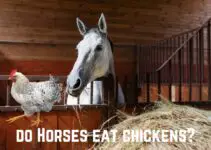It’s at that moment of the year. Temperatures are soaring, the sky is flawlessly blue, and people are flocking to the shores. It’s summer! And to help you beat the heat of the day, you got yourself a popsicle and were even lucky enough to find grape, which happens to be your favorite flavor.
And with your furry companion heavily panting by your side, you opt to share with him some of the treats to at least make him cool off. Your dog enjoyed it and was even begging for more— but it then begins to dawn on you; dogs don’t eat grapes! Well, keep reading to know whether it’s healthy and what to do when your dog eats a grape popsicle.
Contents
What Should You Do If Your Dog Ate a Grape Popsicle?
If you forgot and shared your grape popsicle with your Fido, you may need to contact the vet. As tasty as these summer treats are, they can be just as harmful to your canine. However, that will depend on the amount taken and your dog’s health status.
A lick or two will likely not harm your dog. However, in large amounts, grape popsicles can cause side effects that range from mild to severe. That’s because they typically contain ingredients that usually don’t interact well with your canine.
The real threat is the sugar content. Let’s be honest; popsicles aren’t just cold. They are sweet as well. Perhaps these two things are what make them a favorite treat for you and many others when summer rolls around.
Unfortunately, the high amount of sugar will more often not go well with your dog. Canines tend to be more responsive to sugar ingestion, probably more than humans and other pets.
A small amount of sugar may not trigger anything serious in your Fido. But that’s not it with large intakes. So, if you suspect that your pup took an amount possible to attract issues, get in touch with the vet as soon as possible.
On dog’s health status, canines with underlying medical conditions are the most unfortunate. For diabetic pups or those with chronic conditions, trouble is likely with slight intakes.
Hence, if you have such, with or without the signs, visit the dog doctor immediately after learning that your canine ate a grape popsicle.
And with all that we’ve said, does it imply that these treats are bad for dogs?
Now, we will be looking at that shortly. However, for now, let’s take a look at something more apparent:
Can Dogs Eat Grape Popsicles?
We already said that you should contact your vet if you suspect that the amount eaten by your dog could attract health issues. But does that mean dogs can’t eat grape popsicles?
Well, the fact remains that just like the grapes themselves, grape popsicles are typically not a healthy option for canines.
Sure, some popsicles you buy out there don’t contain real grape essence and extracts, the elements considered poisonous to dogs. However, these treats still pack a few ingredients also dangerous to dogs. That’s especially true when ingested in large quantities.
So yes, if you were thinking about buying your dog a grape popsicle, considering a healthy alternative could save you a trip to the vet.
And now, what ingredients make these mouth-watering treats a no-no for dogs? They can be several depending on the preparation. Some options will contain real grape extracts and essence, all poisonous to our furry friends.
The other harmful component you are likely to find in grape popsicles is an artificial sweetener. Most artificial sweeteners are poisonous to dogs, so again, do not share your popsicle with your furry friend.
Substances such as artificial colors, also coming in ice pops, attract health issues in dogs, especially in the long haul. Allergies, cancers, and increased vulnerability to viral infections are all on the list of the many conditions they may cause in dogs.
The list of toxins doesn’t end there. We have more that we can’t all cover today. And with that said, I believe it’s now clear why you shouldn’t share your grape popsicle with your four-legged companion.
And So, Are Grape Popsicles Bad For Dogs?
It depends. Every grape popsicle containing any of the toxic ingredients is bad for your dog. Again, as said, the above aren’t the only poisonous substances you’ll find in grape popsicles, so be very careful.
If you are not sure whether a grape popsicle has harmful elements, it’s better not to give it to your pet. You love your adorable Fido, so avoid giving them anything that could put their life at stake.
The good thing is that we have lots of healthy options for canines. So, as you opt to buy those tasty freeze pops for yourself, get your pet something different. That way, you will both be happy!
For your canine, consider treats like frozen yogurt, frozen cheese, frozen peanut popsicles, and others of the kind. They are just as tasty and have the same cooling effect as grape popsicles, however safe for canines. But again, keep in mind that treats should only make up 10% of your dog’s daily caloric intake, so stick to that!
Can Dogs Eat Sugar-Free Popsicles?
Unfortunately, your furry friend can’t eat “sugar-free” popsicles. Most of the treats labeled as “sugar-free” contain Xylitol, a sugar alcohol that’s safe for human consumption but fatal when it comes to dogs.
When your dog eats sugar-free popsicles containing Xylitol, the sweetener will get absorbed rapidly into the bloodstream. What follows is the rapid release of insulin, the blood-sugar regulation hormone. Insulin then responds by lowering the blood sugar to unhealthy levels, causing hypoglycemia.
According to the ASPCA Animal Poison Control Center (APCC), you will then begin to see your dog showing signs, basically the symptoms of low blood sugar.
They include:
- Lethargy
- Decrease in appetite
- Vomiting
- Diarrhea
- Yellowing of the skin
- Incoordination
- Seizures
- Decreased activity
ASPCA adds that depending on the toxicity level, it will take between 30 minutes to 12 hours after ingestion for the symptoms to appear. However, according to the U.S Food and Drug Administration (FDA), it could take as few as 10 minutes for the manifestations to begin.
So yes, don’t think that the “sugar-free” label makes a treat any safer for your pup. Actually, such are even more dangerous, especially if Xylitol happens to be one of the ingredients, which is most of the time the case.
Hence, if you gave your dog a sugarless popsicle, visit the vet as soon as possible, call an emergency clinic or animal poison control center immediately.
Unless you act with speed, Xylitol can even cause death in dogs. That’s how far it can go, so if you can, keep your dog far from it.
Can Dogs Eat Jolly Rancher Popsicles?
Much more like sugar-free ice pops, dogs should not eat jolly rancher popsicles. While the deliciously fruity flavor could turn your favorite, frozen desserts can cause devastating effects when taken by your furry friend.
Jolly rancher ice pops typically come with untamed fruit flavors. Most combine several fruit flavors, where you are more likely to find grapes, one of your dog’s greatest enemies. However, we still don’t have any research pinpointing what substance exactly in grapes causes the poisoning.
After you give your canine jolly rancher ice pops containing grape elements, your dog is more likely to develop symptoms of grape poisoning. You may notice signs such as;
- Loss of appetite
- Abdominal pain
- Lethargy
- Kidney failure
- Increased thirst
- Vomiting
- Diarrhea
The severity of these symptoms will differ depending on the dog’s health status and the amount taken. And much more like any other toxic substance, any cases of ingestion need emergency vet service.
But grapes aren’t the only thing in Jolly rancher ice pops that will cause trouble for your pet— these frozen treats typically contain lots of sugar. Now, we all know that sugar isn’t good for your dog’s digestive system, especially when ingested in large quantities.
As such, if you were thinking about getting your dog jolly rancher ice pops, then that’s neither a great idea, just like with grape popsicles. So, what popsicles are safe for your lovely Fido?
Which Popsicles Are Safe To Eat For My Dog?
If you are wondering whether you can get popsicles that are safe for your pet, then you can. Homemade popsicles are the healthiest for your pup. Making ice pops for your canine will allow you to control what exactly goes into them. No one loves your dog more than you do, so you can best provide what’s healthy for your Fido.
Home preparation also lets you bring in more components that you think will work best for your pup’s unique needs. Fortunately, the process is pretty simple and doesn’t take much time and resources.
To make delicious homemade popsicles for your pet, mix banana and peanut butter in a blender. Put the blend in ice trays and freeze— and that’s it! If you don’t have ice trays, paper cups can also suffice.
Now, if you use banana and peanut butter, be careful with the amount you give to your dog and how often you offer the treat. The two ingredients work best in small amounts. You can consult your vet on the quantity to give your pet. It also needs to come a few days a week, preferably two and not on consecutive days.
Alternatively, you can use pure water to make popsicles for your pup. Just put water inside popsicle maker containers without the sticks and freeze. It may not make the tastiest option. However, in the blazing sun, dogs are only after the coldness and not the taste.
One advantage the latter offers over the former is that you can give it as a daily treat. Water doesn’t contain any calories. Hence, you don’t need to worry that your dog will become overweight.
Conclusion: Can Dogs Eat Grape Popsicles?
Summer is tough for everyone, even dogs. In fact, things could be tougher for canines since they remain clothed in fur all through. But that doesn’t mean you should share with them your grape popsicles. No, don’t even think about it!
These delicious summer treats can be dangerous when consumed by pups. If you have to feed freezer pops to your dog, opt for homemade variety. They will do the trick well, but without harming your pet.







